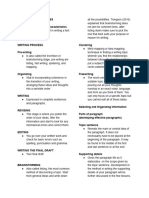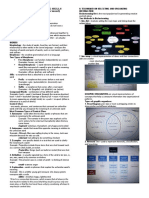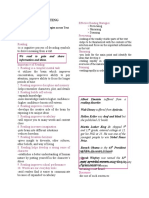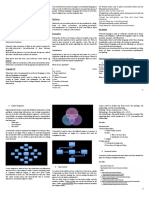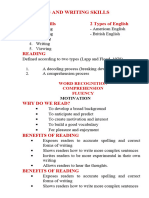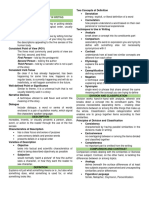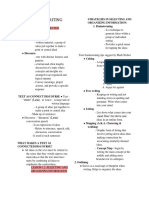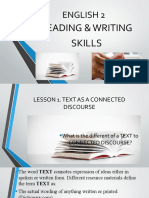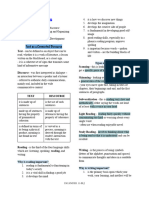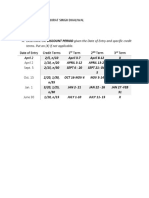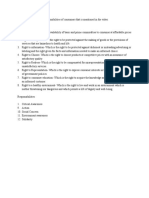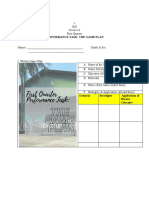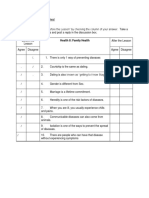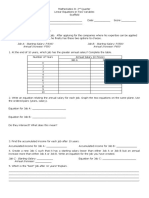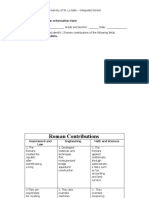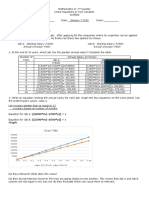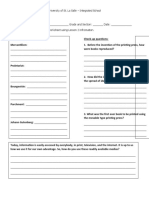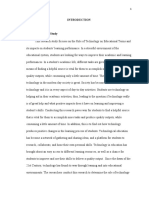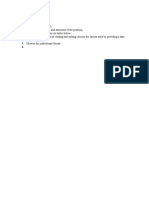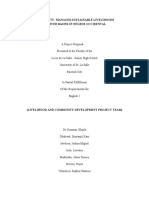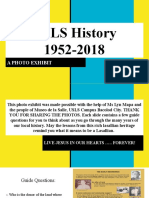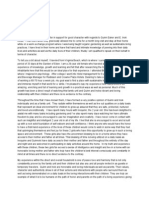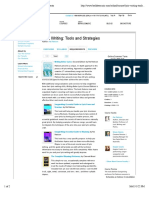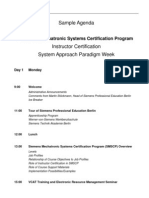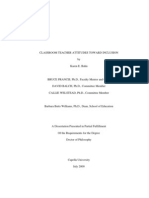0% found this document useful (0 votes)
92 views17 pagesReading & Writing Skills Guide
The document provides information about an English teacher named Rabbi Bon Villarosa and an online reading and writing course they teach. The course aims to develop reading and writing skills through a variety of materials beyond just poetry, fiction, and drama. It covers topics like connected speech, discourse, techniques for organizing information, and outlining principles and formats.
Uploaded by
Simmy DhaliwalCopyright
© © All Rights Reserved
We take content rights seriously. If you suspect this is your content, claim it here.
Available Formats
Download as PDF, TXT or read online on Scribd
0% found this document useful (0 votes)
92 views17 pagesReading & Writing Skills Guide
The document provides information about an English teacher named Rabbi Bon Villarosa and an online reading and writing course they teach. The course aims to develop reading and writing skills through a variety of materials beyond just poetry, fiction, and drama. It covers topics like connected speech, discourse, techniques for organizing information, and outlining principles and formats.
Uploaded by
Simmy DhaliwalCopyright
© © All Rights Reserved
We take content rights seriously. If you suspect this is your content, claim it here.
Available Formats
Download as PDF, TXT or read online on Scribd
/ 17


